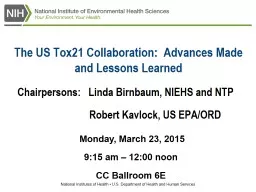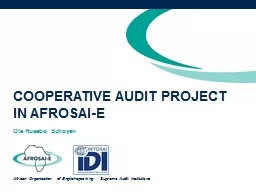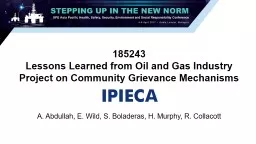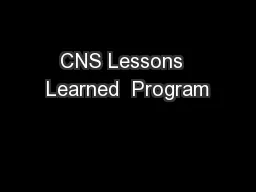PPT-The US Tox21 Collaboration: Advances Made and Lessons Learned
Author : celsa-spraggs | Published Date : 2019-11-09
The US Tox21 Collaboration Advances Made and Lessons Learned Chairpersons Linda Birnbaum NIEHS and NTP Robert Kavlock US EPAORD Monday March 23 2015 915 am 1200
Presentation Embed Code
Download Presentation
Download Presentation The PPT/PDF document "The US Tox21 Collaboration: Advances Ma..." is the property of its rightful owner. Permission is granted to download and print the materials on this website for personal, non-commercial use only, and to display it on your personal computer provided you do not modify the materials and that you retain all copyright notices contained in the materials. By downloading content from our website, you accept the terms of this agreement.
The US Tox21 Collaboration: Advances Made and Lessons Learned: Transcript
Download Rules Of Document
"The US Tox21 Collaboration: Advances Made and Lessons Learned"The content belongs to its owner. You may download and print it for personal use, without modification, and keep all copyright notices. By downloading, you agree to these terms.
Related Documents














